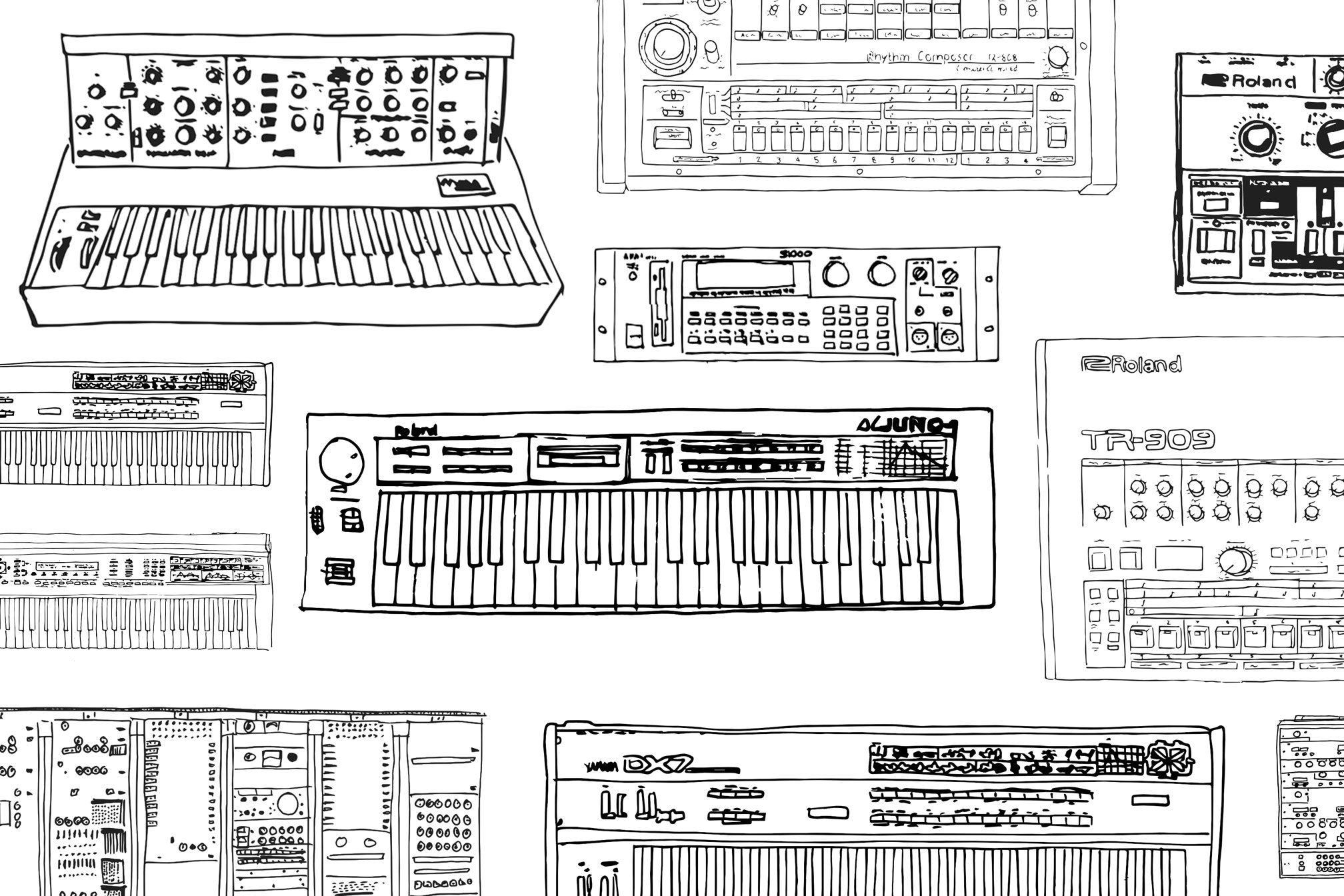 Lists
Lists
The 10 most influential synths of all time
Oli Freke presents a synthesizer timeline
New book Synthesizer Evolution: From Analogue to Digital (and Back) celebrates the impact of synths on music and culture by providing a comprehensive and meticulously researched directory of every major synthesizer, drum machine and sampler made between 1963 and 1995. Here author Oli Freke picks the 10 most influential
Synthesizers are the bedrock of modern electronic music. The relation of the sounds they make to the music of the day is something that's always fascinated me: could certain genres have happened without the specific sounds of a specific synth to drive them? Would some styles we have today never exist, or would other ways to create the effects, moods and vibes have been discovered? It's an unanswerable question as we can't rewind history, but what can be said is there are a number of influential synths that have played an absolutely fundamental role in modern music and some genres even depend 100% on one particular model of synth.
So, what makes an influential synth? Any synth can basically make a noise (we hope), but only a few go on to set the standard to which all others must measure up to, and even fewer manage to contribute a unique sound that forms the bedrock of entire new genres, and which can be pinned down to one moment in a studio, a record or a specific preset.
This article sets out ten instruments which have gained immortality by inspiring new forms of music, genres and staple sounds within them. Notable is that this is often inadvertent on the part of the synth manufacturer – a synth or drum machine is designed to be brilliant at one set of tasks, but musicians and producers frequently subvert these to discover where their true value lies.
These machines that are not necessarily the biggest selling or most well known (though some are), but they are ones which contributed a distinctive sound which was not easily replicable by anything other than that particular synth...
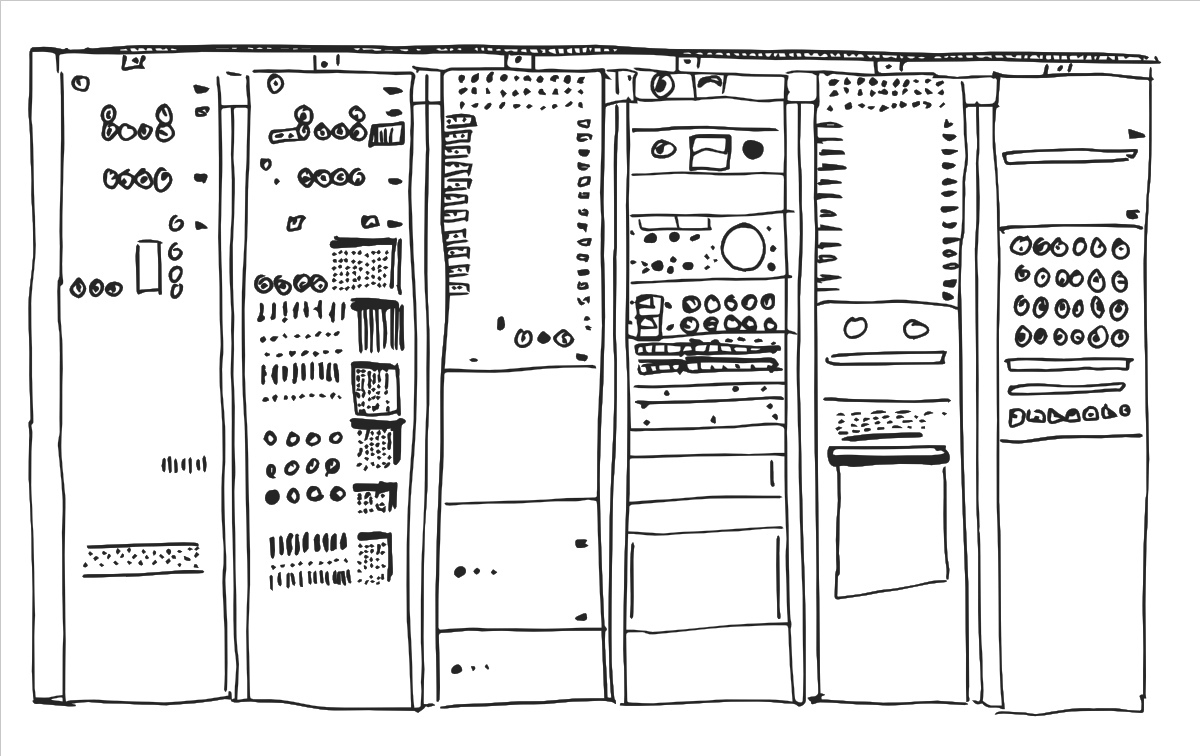
RCA SOUND SYNTHESIZER MKII (1957)
I'm completely cheating by sneaking in a number zero, but the RCA's room-sized, vacuum-tube based sonic research laboratory gets the credit for contributing the word 'synthesizer' to the language. It's the first case of a machine being designed for one thing, and excelling at quite another. One story is that it was commissioned by the Radio Corporation of America in order to replace their expensive orchestra with a less troublesome electronic alternative. But being only four-note polyphonic and laboriously programmable by punch-cards, it was instead used by cerebral academic composers such as Milton Babbitt to compose abstract electronic works that threatened no acoustic musician's day-to-day employment.

1. MOOG MODULAR (1964)
Robert Moog invented the first true commercial synthesizer in 1964 using the newly affordable transistors that were becoming available, and in doing so implemented the fundamental synthesis concepts that are still in use today: the voltage controlled oscillator, the voltage controlled filter, the low frequency oscillator, envelope generators and more. This set the basic pattern for all analogue synthesizers to follow, and for many digital ones too.
Initially, this nascent synthesizer technology was only of interest to avant-garde composers such as Herbert Deutsch, who helped Moog design his first instruments. But over the course of the 1960s, as Moog (and other manufacturers) refined the capabilities of the synthesizer, their sounds started to feature on pop records. They often took the musical role of a fancy electric organ or for special effects. A notable early use of a Moog Modular was by the Beatles on 'Here Comes the Sun'. The descending pitch tone heard at the end of the intro is apparently because the unreliable oscillators wouldn't hold their pitch after a note was played – but the Beatles liked the unintended effect and kept it in. Synths not working properly or having their shortcomings made a virtue will be seen frequently in this article!
However, it wasn't until Wendy Carlos released the best selling record 'Switched-on Bach' in 1968, that the potential for synthesizers to take centre stage and to be considered real musical instruments was acknowledged. This record was a painstaking re-construction of the works of JS Bach using a Moog Modular which at that time couldn't stay in tune for more than a few bars (see the Beatles experience above!) Taking months to build up the multi-layered recording, the effort was rewarded as the record is now recognised as the one that changed the world's perception of what electronic music could be, and how synthesizers could be used for genuine musical expression.
Following 'Switched-on Bach', there were a rash of copy-cat records. One of the more interesting ones was 'Music To Moog By' in 1969 by Gershon Kingsley, which is notable for the original version of the synth classic 'Pop Corn', made famous by the band Hot Butter in the 1970s.
Modular synths from other manufacturers, including Buchla, E-mu, EML, and Serge then took a prominent role in the world of progressive rock with extended synth solos eventually becoming almost as clichéd as the extended guitar solo, drum solo, or gawd help us, the bass solo…
The modular synth, then, as invented by Robert Moog, was certainly the first step on the road to the synthesizer's lead role in electronic music - as a keyboard driven instrument with sound generating oscillators that offered significant sonic control to the musician.
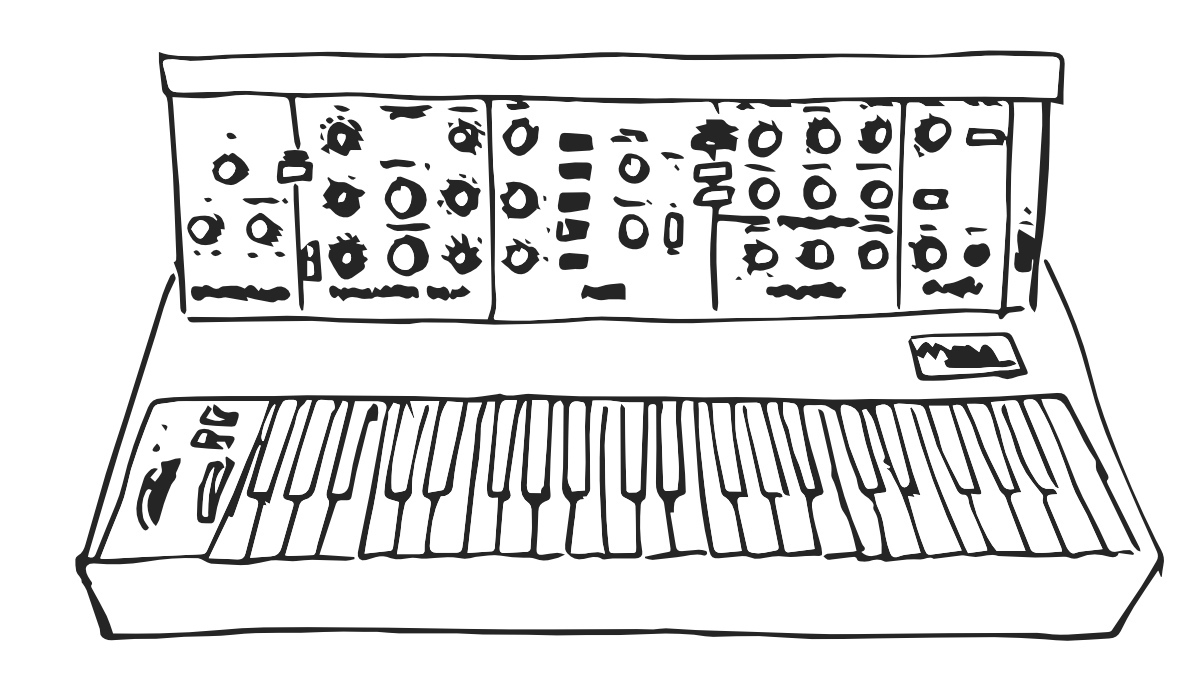
2. MOOG MINIMOOG MODEL D (1970)
No list of influential synths would be complete without the Moog Minimoog Model D, probably the most famous synthesizer of all time. It represents the shift from the cabinet-sized modular synths of the 1960s (see above) to the 'all-in-one' portable designs of the 1970s, which offered a keyboard with knobs and sliders in one convenient, self-contained package. Replacing the infinite complexity and patch-cables of modulars with hard-wired switches and sliders, the design of the Minimoog set the standard pattern for the following generation of similarly designed portable analogue synths - the ARP Odyssey, Sequential Circuits Pro One, Teisco 100F, Yamaha SY-1, and many more.
Of course it wouldn't have been successful had it not sounded great - but its three fat oscillators and the famous Moog 'transistor-ladder' filter easily took care of that. Whilst its tone could be considered that of a 'standard analogue synth', albeit a lovely one, it was able to excel in all roles demanded of it: as a bass machine (Parliament, 'Flashlight'), lead synth (Pink Floyd, 'Shine On You Crazy Diamond'), effects machine and everything in between.
Despite its influence and success, it didn't save the RA Moog Corporation from changing hands several times in the 1970s, and going bankrupt in the mid-1980s. But clearly Robert Moog was more interested in creating timeless musical instruments than chasing profit. The evidence is in the Minimoog's status as one of the best monophonic synths ever made, with pretty much every notable synth player and keyboardist having been in possession of one at one time or another.
The only feature it lacks in my opinion – which I'd retrofit to one if I ever owned one! – is the thrilling sound of 'oscillator-sync', a kind of ring modulation where the waveform of one oscillator hard-restarts the waves of another oscillator, creating a set of new harmonics over the original pitch.
3. SEQUENTIAL CIRCUITS PROPHET 5 (1978)
Sequential Circuits were formed in 1978 by Dave Smith, a legendary figure in the history of synthesizers. The company's first synth, the Prophet 5 was an immediate sensation. Unlike the largely monophonic synths of the late 70s, such as the Minimoog, it had five-note polyphony. This meant that more just than basslines and lead solos could be played, extending the musical output of synthesizers to include full chords and other polyphonic accompaniments.
Not only did it have a rich five-note polyphonic sound, but it was also the first synthesizer to use integrated circuits to provide fully recallable presets. In an age when it was competing with other giant polyphonic synths like the Yamaha CS-80 which had an only rudimentary recall, it only cost $3,500 (n today's money) compared with the completely out-of-reach $35,000 for the Yamaha.
It did take three revisions of the Prophet 5 to iron out its notorious tuning instabilities and other issues, and as a result, it is not one of synths with the greatest reputation for reliability. The one case, perhaps, where the issues and problems weren't actually a virtue, but really just a bit of a nuisance.
However, the Prophet 5 showed that it was possible to make a (relatively) affordable true polyphonic analogue synthesizer, leading the way for similar offerings from Korg, Moog and others. And it had a great oscillator sync – hear it on 'Let's Go' by the Cars in the intro.
Dave Smith went on to create the MIDI standard with Ikutaro Kakehashi of Roland, which revolutionised electronic music and studio production from the mid-1980s. MIDI enabled computer control of synthesizers and the ability to connect up different manufacturers instruments, something not previously possible.
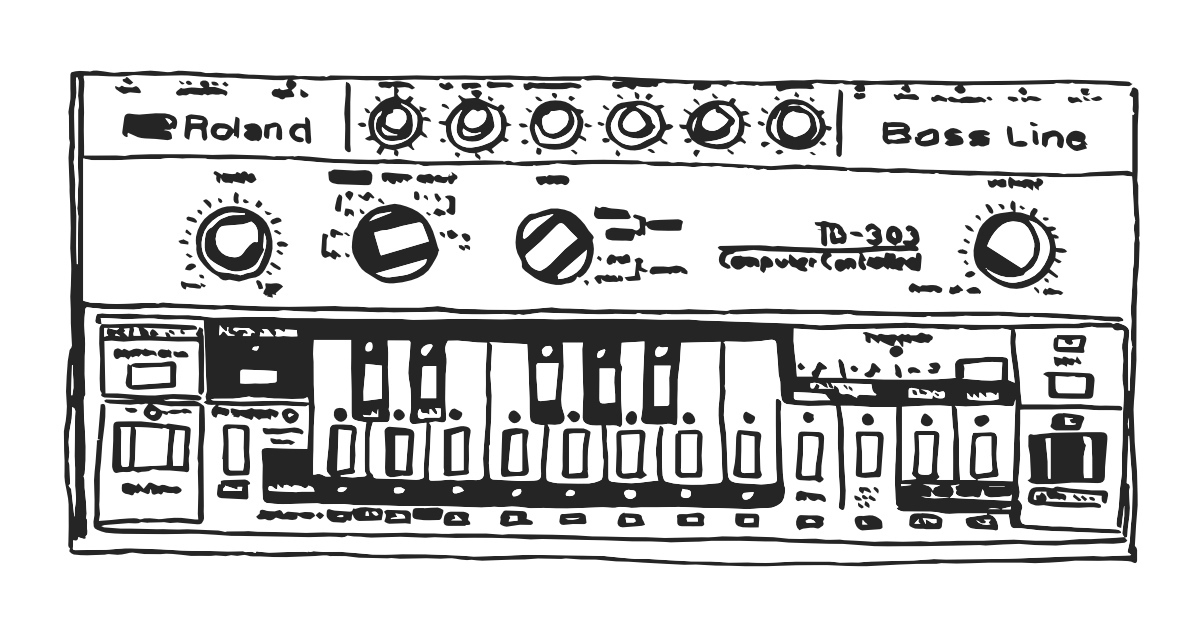
4. ROLAND TB-303 (1982)
Well, if there is even one reader of Mixmag who is unaware of the impact of the Roland TB-303 on the evolution of dance music, then...well...for that reader, I'll just use the phrase 'acid house', and that should fill in the gaps.
The noteworthy facts about the TB-303 are that it was designed as a stand-in bass player for use at band practice. At this task, it was signally useless and any band member suggesting its use would probably be immediately dismissed, along with their ridiculous silver box.
The resulting mountains of unwanted TB-303s piled up in the secondhand music shops of the world, but in Chicago they were picked up cheaply by DJs and producers looking to create the new 'house' music style rapidly becoming popular in the early 1980s. Marshall Jefferson reports that he bought his in a pawnshop for $100 and subsequently sold it to Bam Bam for $1,000 - yes, after the acid-house boom!
Maybe it was only a matter of time before someone stumbled on the hypnotic squelch of the future generated by the TB-30 given that synths often offered simple arpeggiation and step-sequencers. But as it happened it was DJ Pierre who discovered its effect and released the result as the record 'Acid Tracks' under the name Phuture in 1986. DJ Ron Hardy had previously played a prototype version of the tune at the Chicago club Music Box a reputed four times. The first play received bafflement, but by its fourth outing the roof was raised, and a new genre had been born.
'Acid Tracks' was the founding track of the whole acid house movement, which in Europe evolved into the rave and techno scenes, and which shows no signs of letting up anytime soon. The 303 acid line is still found in many new releases across genres - and probably always will be.
What I find amazing is that this synthesizer actually has pretty terrible specs – only one oscillator, which only has two waveforms to choose from (sawtooth and square). It has just one filter which doesn't even quite go into self-oscillation, and it only has a basic 8-step sequencer. Regardless of these limitations, though, it transformed dance music and is still the cornerstone of much of it. Equally surprising is that no other synth (unless specifically designed as a clone or digital model) can really make the same acid sound. Which is quite bizarre when you think about it. We just have to accept that there is something special about its circuits, and as we'll see, Roland Corp seem to have a knack for creating instruments in the 1980s that could reach parts of the sonic spectrum that other machines couldn't reach. And sounds which then often found their niche in the cutting edges of dance music.
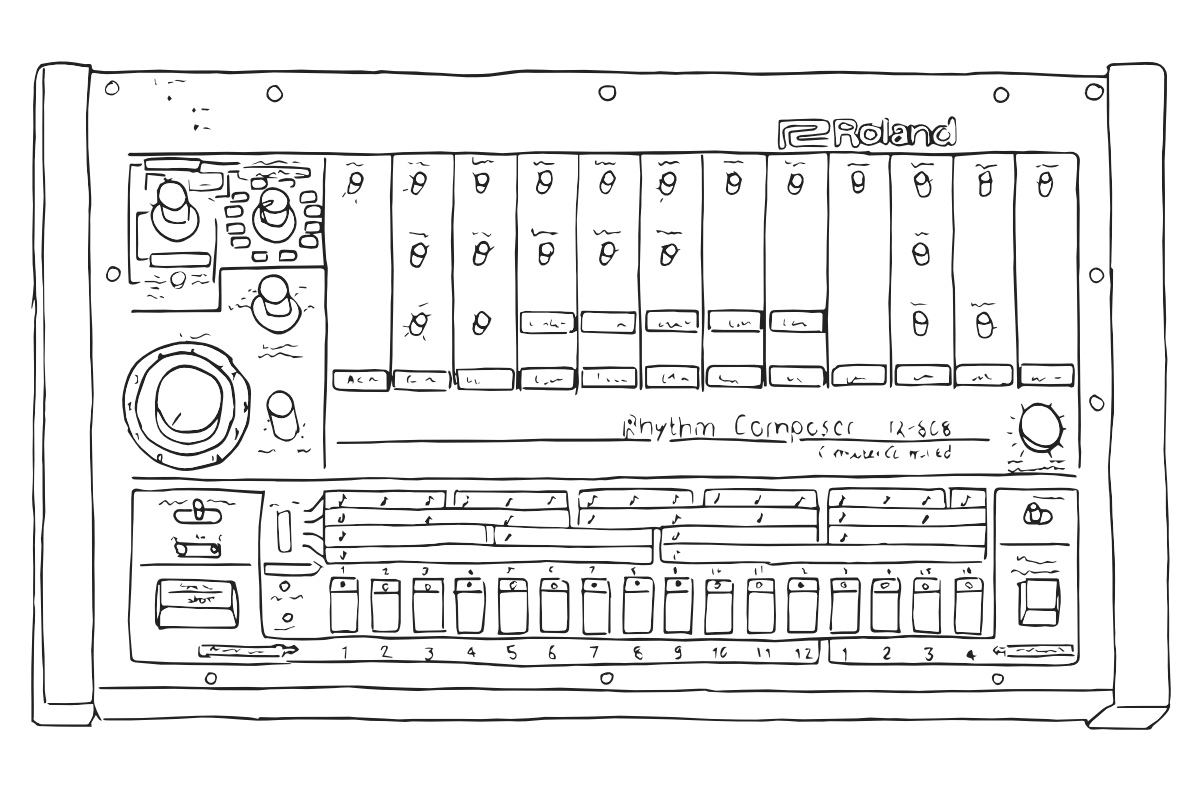
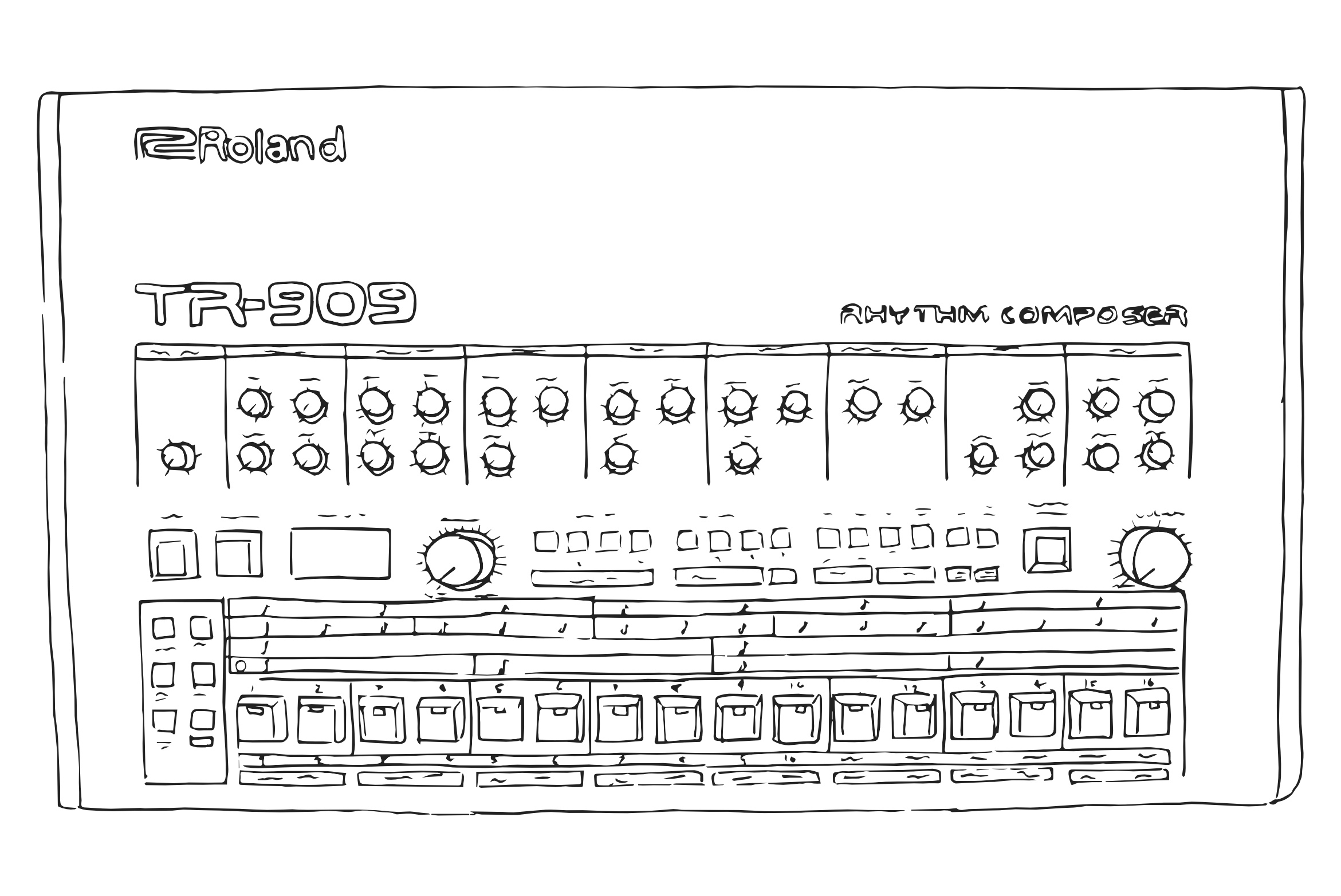
5. ROLAND TR-808 (1982) & TR-909 (1983)
So not technically synthesizers in that they are dedicated drum machines, they did generate their sounds using analogue circuits*, so I'm including them due to their undeniable influence on all of dance music since they were released. *(Ok, the 909 used samples for the hi-hats and crash cymbals)
Just like the TB-303, the TR-808 was not initially well received - it was expensive and people were far more excited by the newer drum machines such as the Linn LM-1 Drum Machine which used real drum samples for greater realism.
The 808 got its break (pun intended) in the electro and hip hop scenes of early 80s' New York. Replicating the beats of funk and post-disco grooves caused vast quantities of records to be made with its distinctive cowbell and its still excellent clap sound. The track 'Planet Rock' by Afrika Bambaataa in 1982 was the track to alert the world to its deep booming kicks, crisp hats and sizzling snares.
Subsequently it found a new home as the engine behind the driving four-to-the-floor pulse of Chicago house, another post-disco style that electrified rhythms that had previously been performed on an acoustic drum kit. In this case, this signalled the arrival of the classic 'boots'n'hats' house beat, and the 808s open hi-hat has stayed firmly on the off-beat ever since.
Similarly, the TR-909, with its harder sound, found a home in the nascent Detroit techno (or Detroit House as it was initially called) where the soulful vocals and vibes of house were replaced by a harder-edged futurist sensibility. And which commenced the near fetishisation of the instruments that made it, including especially the TR-909.
The famous low-end of the 808's kick-drum stimulated the creation of newer, sparser dance styles such as Miami Bass, where booming and distorted sound comprises the key sonic signature.
What's great about the 808 is the story Ikaturo Kakehashi of Roland tells in the 808 documentary 808. The microchips that were used for the 808 were faulty military chips that were being sold off cheaply as seconds precisely because they made an unwanted noise. Kakehashi took that fault – that noise – and managed to make it the cornerstone of all contemporary dance music. Of course, because the chip manufacturer fixed the issue with the chips, once the 2000 or so 808s were made it could never be manufactured again (at least not 'til cloning and digital modelling technology became available some thirty years later).
Whilst the 808's place in history is undisputed, it's worth noting that several other drum machines drove early hip hop and house music, notably the E-mu SP1200, Oberheim DMX, and others, and though these are held in esteem, none ever became household names in the same way. Clearly there's something about the way these Roland machines sounded. As ever, there's something about Roland!
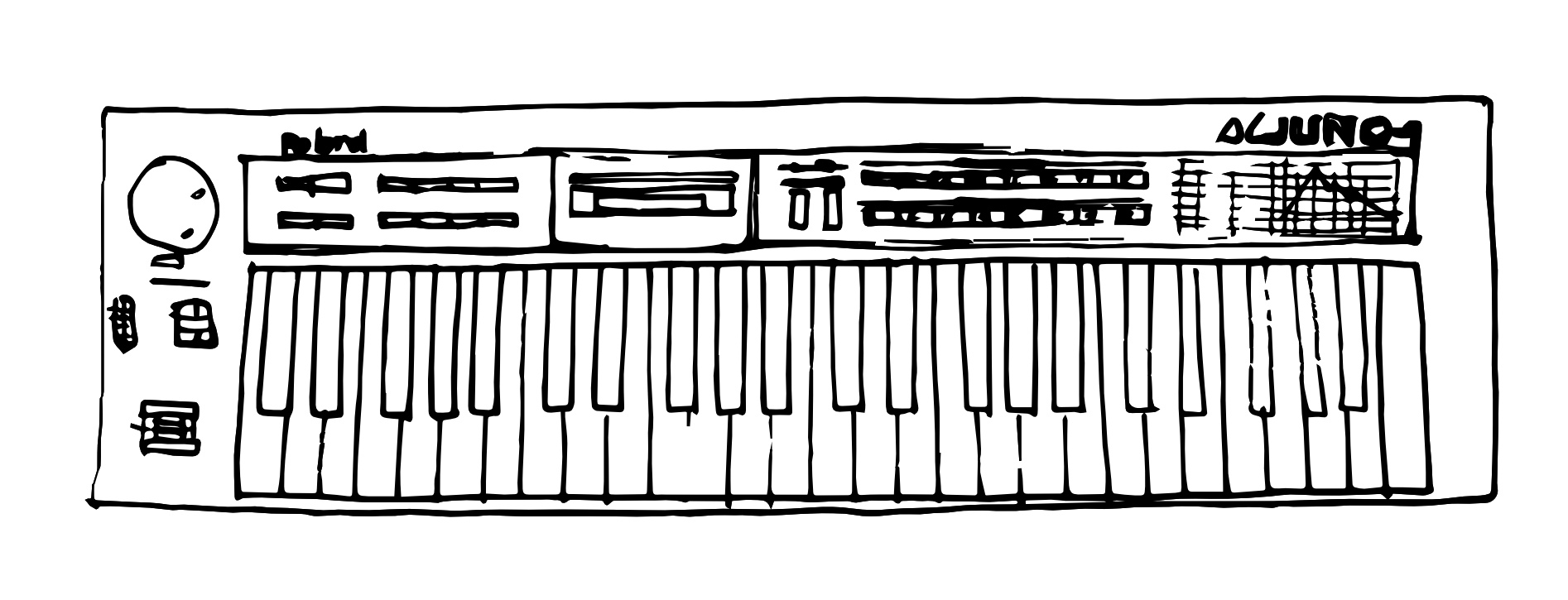
7. ROLAND ALPHA-JUNO 1 (1985)
Let's stick with Roland and their knack for inadvertently creating genre-defining sounds. In this case, it's the otherwise unremarkable digital synths, the Alpha-Juno 1 and Alpha-Juno 2. Joey Beltram was in the studio in 1991 with his writing partner Mundo Muzique, who had brought his Alpha-Juno 1 round for the session. Mundo was keen on a certain preset called 'What The...?' which had a curious electronic pitch-swoop effect. It was near the end of the list of presets where sound designers tend to stick the less obviously useful sounds – the helicopter sounds, dog barks and other silliness. This sound was even called 'What The?' suggesting a certain level of surprise in the mind of Eric Persing who was the sound designer behind it.
In any case, the instincts of Mundo Muzique and Joey Beltram were spot on. When the record 'Mentasm' by Second Phase was released in 1991 into the maeltstron of early 90s breakbeat hardcore and European techno, it was discovered that this sound had a very 'stimulating' effect on the psychology of the raver. Such that it was renamed as the 'hoover' to describe the experience, and became a staple of that scene.
Several other hoover tracks were released at much the same time - 'Acid Pandemonium' by Mundo Muzique himself, and Joey Beltram's remix of 'Dominator' by Human Resource.
After this hoover blitzkrieg, it was sampled and used regularly in the harder dance styles of the 1990s and 2000s: first breakbeat hardcore, then rave, jungle, hard house, dubstep, and finally...er, Lady Gaga. You know a sound has jumped the shark when it hits the pop charts…
Despite that, it's an intriguing sound; it's constructed by one of the two oscillators performing a dramatic pitch dive over which pulse-width modulation occurs simultaneously. A very dynamic sound which was actually processed further by Beltram in a Casio FZ-1 sampler adding extra filtering and grit to the sound.
And – speaking as a producer who ran a hard house label in the 90s and produced hard dance records using an actual Alpha-Juno – I've yet to hear any other synth that can actually recreate it properly. Listen to any of the patches out there for other synths that claim to make it...they're rubbish! You need an Alpha-Juno. Or need to get the sample of it. Or I suppose use an Alpha-Juno plugin in your computer. Ok, it's pretty easy to come by the sound these days, but you get my point…
To sum up: the sound of the hoover is yet another example of Roland's unique ability to make synths that can create or define new genres, especially when they don't intend to! Remarkable!
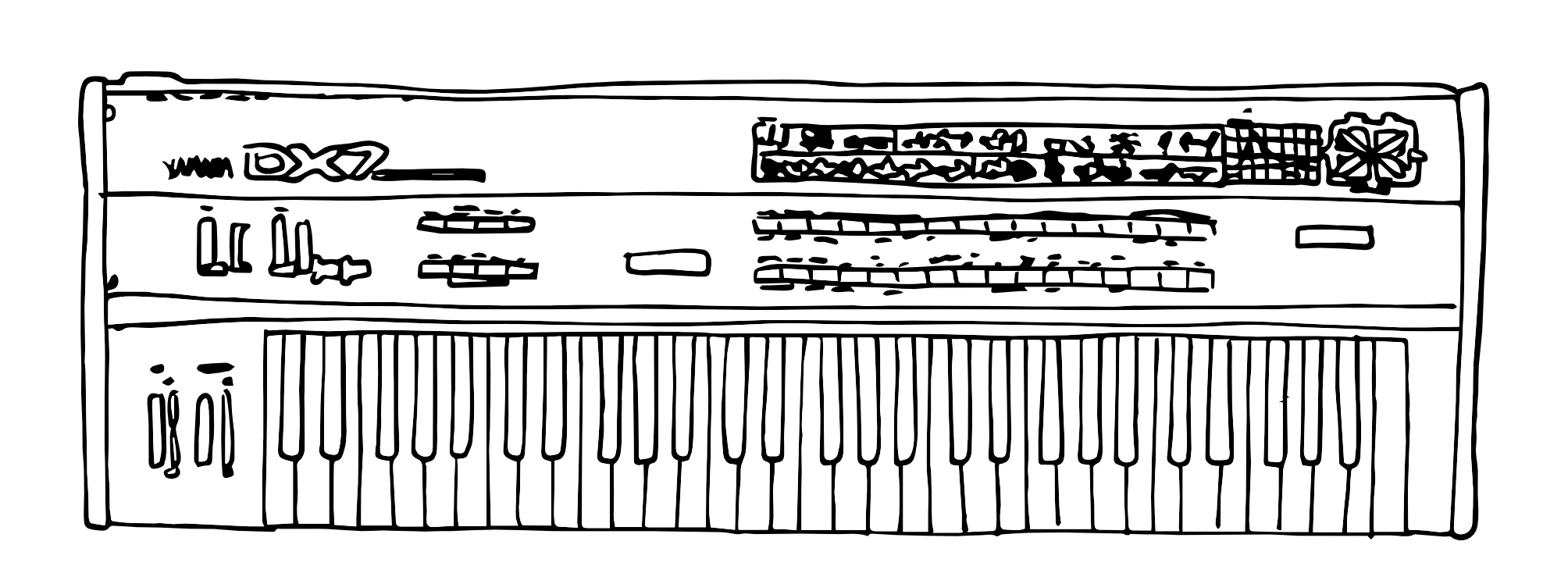
8. YAMAHA DX7 (1983)
Most synths up to 1983 were analogue; they used electronic circuits to generate waveforms in real time by manipulating the voltage of an audio signal flowing through it. Sure. there were some early samplers kicking around – if you had a spare £100,000 for a Fairlight CMI, and there were some 'additive' synths, but these weren't particularly widespread either.
So analogue was king... Until the first commercially successful digital synthesizer appeared on the scene – the Yamaha DX7. It used a technology called Frequency Modulation (FM) and it appeared (at first) to solve all of the problems of analogue synthesizers: it stayed in tune where analogue was notoriously unreliable; it had eight notes of affordable polyphony where most analogues were still monophonic; it was 8 note polyphonic whereas truly polyphonic synths were much more expensive and even more unreliable (see the Prophet 5 above); it had 32 recallable presets where analogue synths rarely had that capability. But most of all, it had a whole new range of sounds that were completely impossible* to make using analogue technology. (*Analogue FM isn't impossible, but is pretty hard to implement, and can't compete with the digital equivalent).
Yamaha licensed FM technology from Professor John Chowning of Stanford University in 1973 and spent the following decade developing a commercial product around it. The first effort was an electric piano, the GS1 in 1981, but it looked like a grand piano and had no real editing facilities. The DX7 was the first realisation of the tech as a 'proper synth' that keyboardists could get their hands on and use like a synth.
FM works by enabling complex modulations of sine-waves to be set up, which can generate much more complex harmonics than basic analogue synthesis. As a result, the DX7 excelled at convincing electric piano tones, xylophones, marimbas, organs, brass and many other sounds previously hard to do with analogue. Being brighter and richer in the upper harmonics it immediately became a staple in pop music production providing the 80s with it's first really glossy and shiny synth tones.
It became the best selling synth up to that point and pretty much every self respecting producer, studio and composer had one. Here's its familiar electric piano tone on Whitney Houston's, 'Greatest Love of All'.
Yamaha then spent the next half-decade wringing out of the technology a large number of variations on the theme...the DX7S, DX21, DX5, DX9, DX7II, DX100, TX81Z, FB01, B200, YS200...
It was absolutely considered the bees-knees for a couple of years, until Roland just had to come along with another barnstormer and spoil their party…

ROLAND D-50 (1987)
The D-50 put even more gloss and sparkle into 1980s pop music with their even newer digital synthesis technique named 'Linear LA' - which certainly sounds very glossy, neon and 1980s.
The synthesis technique itself is based on the playback of preset samples. These comprise extremely short 'transient sound' samples, from which the ear derives a lot of sonic information, and 'sustained' samples which form the longer looped portion of a sound after the initial transient. After this, standard synthesis processes of filtering, enveloping and LFOs are applied for further creative sound design.
These newly realistic sounds immediately made the DX7 sound limited and the D-50 became the new synth of the moment, with several of its presets becoming immediately recognisable; not least 'DigitalNativeDance' which cropped up on several tracks, such as Miles Davis' 'Cantembe', and er, the UK's children's' programme Grange Hill.
Extending the range of the DX7's realism, the D-50 set the pattern for the next generation of synth sounds: realistic brass, lush pads, sampled drums, searing synth leads, and much else. It also set the pattern for the next generation of synth design. The next best-selling synth to come along was the Korg M1 (1988) which also used the 'transient & sustain' sample approach (usually referred to as 'sample and synthesis'). Both Korg and Roland churned out variants of this type of synth for a good decade, as did many other manufacturers, until people got bored of the increasingly soundalike synth tones.
Whilst it was hot, the D-50's pizzicato became a well known sound, Enya's 'Orinoccho Flow' being one of the trailblazers. Dance tracks of the 1990s then also cottoned onto the lead pizzicato string sound: Faithless, 'Insomnia', DJ Quicksilver, 'Bellisima', Brainbug, 'Nightmare', Sash, 'Encore Un Fois', etc... Though these came from later Roland synths, they were absolutely an evolution of the D-50 originals.
The ubiquitous successor to the D-50's mantle, the Kog M1 released in 1988 also contributed staple sounds to early 90s UK pop house: M1 organ sound - Robin S, 'Show Me Love' and M1 piano sound - Black Box, 'Ride on Time'.

10 AKAI S1000 (1988)
Ok, this one's a slight cheat, but you did get a Synth 0 for free! The Akai is not a synthesizer, of course, but a sampler. Albeit a sampler with synth-like processes included in its armoury - the filters, LFOs, envelopes, etc, with which to process samples further.
But it surely earns a place on the list as one of the most influential 'electronic instruments' of all time; the S1000 built on Akai's earlier samplers, the S612, S900 and S950, and was the first truly affordable CD-quality sampler with a decent amount of memory.
It was used by the dance music fraternity in the late 80s and all through the 90s and fuelled the explosion in dance music of that time. Genres like hip hop, jungle, breakbeat hardcore, big beat, and modern electronic music generally, are unthinkable without the technology of sampling. Certain effects of sampling are clichés now - the s-s-stutter triggering of vocals; the sped-up vocal samples of rave; the t-i-m-e-s-t-r-e-t-c-h of Fatboy Slim.
More significantly though, the collage approach to music making are samplers' true legacy. The ability to re-use existing recordings in new contexts and to create new connections between those recordings generated huge creative potential. As well as the introduction of sonic textures not possible through standard synthesis methods.
Of course, there was the damping effect of copyright enforcement after the lawyers noticed what was going on, but used creatively, sampling has been one of the most transformative musical technologies of our era.
Worth noting too that the S1000 was by no means the only sampler used, but it was certainly the staple machine you expected to see in studios of the 1990s. Although Akai was pretty much the gold standard, American manufacturer E-mu was another well-respected maker of samplers with their Emax and Emulator.
So there we have it, 10 of the most influential synths (and one sampler) of all time, each of which can lay claim to a unique contribution to a genre or music style, without which those genres may never have existed. Could acid-house have happened without the TB-303? Could jungle have been mashed into existence without samplers? Would Chicago house have existed at all without the TR-808? All we can say is that those genres – and many more besides – didn't exist until these instruments appeared, and I think it's fair to say that that couldn't have either!
Oli Freke is a music producer. Check out his website here
Synthesizer Evolution is out now via Velocity Press


